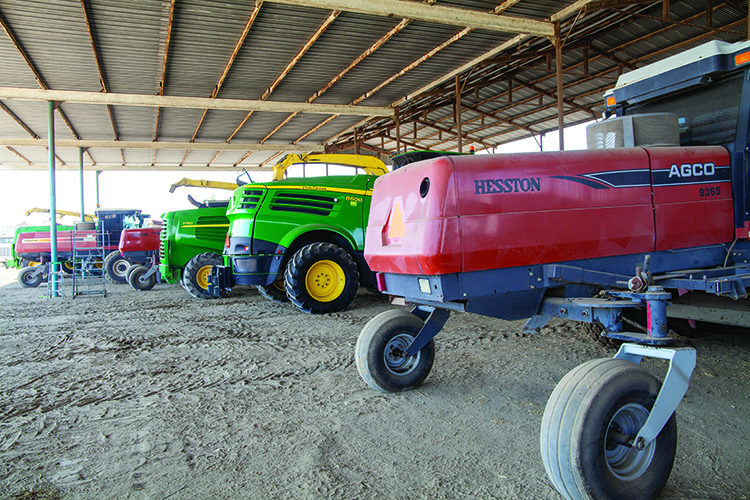The author is a managing partner in Elite Ag LLC,Leesburg, Ga. He also is active in the family farm in Rutledge.

What a year 2021 is shaping up to be. Commodities were “limit up” for a week straight, then two weeks later, “limit down” each day. Feeder cattle have been steady, and milk has seemed to hold its own as well.
One thing that has been a disappointment in the agricultural sector is farm equipment. Whether it is a delay in parts delivery from UPS or FedEx, lack of new iron on dealers’ lots, or the exploding value of good, used equipment, the equipment business has been a roller coaster this year with both highs and lows. Let’s break down a few of the issues we seem to have encountered, and I’ll offer my two cents on how long before some sort of normalcy returns.
To begin, I believe the problem that can be solved with the least number of headaches relates to the parts shortage and shipping issues. This has affected all of us, no matter what color of equipment resides in the shed. The problem has been caused by manufacturers not having enough employees to produce items at full capacity and suppliers not having shipping containers to supply needed components to finish the product. The same has been true in the automotive industry. By the end of the summer, most retailers and manufacturers should at least be able to offer an accurate timeline as to when you can expect a part to be delivered.
Unlike a normal year, we have had numerous packages not show up on time or with damaged or missing parts. I was tracking an overnight freight shipment this spring that did not make it on time, and I finally got a manager on the phone who was willing to explain the situation to me. The blame went to COVID-19, but not in the way you might think.
A vaccine priority
Apparently, when the U.S. government contracted with both UPS and FedEx to deliver vaccines, they requested a significant amount of workforce — up to one-third, according to the manager I spoke to. In addition, a substantial number of planes and trucks were relegated to the effort. As a business owner, I could not imagine still trying to run a company without the top one-third of my assets and employees. When you think about it in this light, I find myself being a little more patient with deliveries and have confidence that things will soon return to normal as fewer vaccine shipments are needed.
Watch the steel price
For many farmers and ranchers, purchasing new equipment this year has been a waiting game. Unfortunately, I do not see us catching up anytime soon. I think it will be at least until the end of next summer or early fall before there is some relief and equipment manufacturers get caught up with the backlog of orders from dealers. Some companies are currently citing delivery times of eight to 12 months out on certain types of equipment.
The one factor I believe will determine how fast we catch up is the price of steel. If it remains high, I don’t believe dealers and farmers will order as much new equipment this fall for 2022 production. This will allow production to catch up faster. If steel prices come back down, I expect dealers to fill up their lots again with new inventory that’s ready to sell. If there’s not a good selection of new equipment, most farmers may shy away from upgrading to newer used tractors or implements.
The used market is one that has been interesting to watch. Equipment values have skyrocketed this year with the shortage of new iron coupled with high commodity prices. This is a good thing for most people, as iron gets moved. However, the used machinery market will likely be tight for the next several years. The lack of new equipment being sold during the last part of 2020 and all of 2021 will have a trickle-down effect for the foreseeable future.
A low-hour, low-use unit of anything will be tough to come by for many months to come. If you find a unit that fits your needs, snatch it up. Another one may not come along for quite a while. If your current equipment line is running well and in good condition, it may be best to hold off trading for a while to see what happens.
Keep a close eye on interest rates
and the equipment inventory situation. Better times will come for purchasing equipment, but for now, we’re clearly in a holding pattern.
This article appeared in the Aug/Sept 2021 issue of Hay & Forage Grower on page 27.
Not a subscriber? Click to get the print magazine.

